Before you start your garden you need a plan. There are lots of things you need to consider before you start your vegetable and herb garden. I would strongly recommend starting a herb garden first if you are a little nervous about succeeding. A herb garden is a great way to prove to yourself you do in fact have green fingers. Once you feel more comfortable you can branch out into a vegetable garden. Here with the 5 steps to vegetable and herb garden success:
What plants are you going to plant?
- We all love to day-dream of owning a self-sufficient farm that provides all year around (well at least that’s my dream) the reality is that space is at a premium in most of our gardens so we cannot plant everything. Make a list of your favourite herbs and what you love eating and cooking with – by planting herbs you use often you may find a little more motivation to look after your garden. My favourite herbs to use (and grow) include …
- Basil
- Parsley
- Rosemary
- Sage
- Thyme
- Oregano
Once you have your “wish” list – I recommend doing a little research on these plants. I have put a small table in below to help you. Make sure your garden area has enough light and space to grow the herbs you wish to plant.
- Will you plant your garden in containers or in beds in the ground? Containers include things like pots, troughs and even items such as old tires, buckets, wheelbarrows, coffee cans etc. The advantages of a container garden includes the ability to move the containers around if they are not getting enough sun or if they are getting too much sun. It allows you to garden in small areas (so there is no excuse to not garden) and it allows you to create the perfect soil conditions very easily.
If you have the luxury of space in your garden, to grow your herbs and vegetables in the ground then please observe your gardens light and sunlight during the day to see if there is enough sun for your little plants.
- Get your soil right. There are three main components of soil – Sand, Silt and Clay.
The sand allows the water to flow through quickly, while the silt and clay hold the water in the soil longer. The right combination of all three allows the water and air to flow through the soil, appropriately trapping and releasing water and nutrients to the plant. Thus if you have poor soil the plants may die due to lack of water (too much sand) or drowning (too much clay).
If you have a garden there is an easy way to test this… (If you do not have a garden – go buy yourself a bag of potting soil from the nursery to fill your pots with)
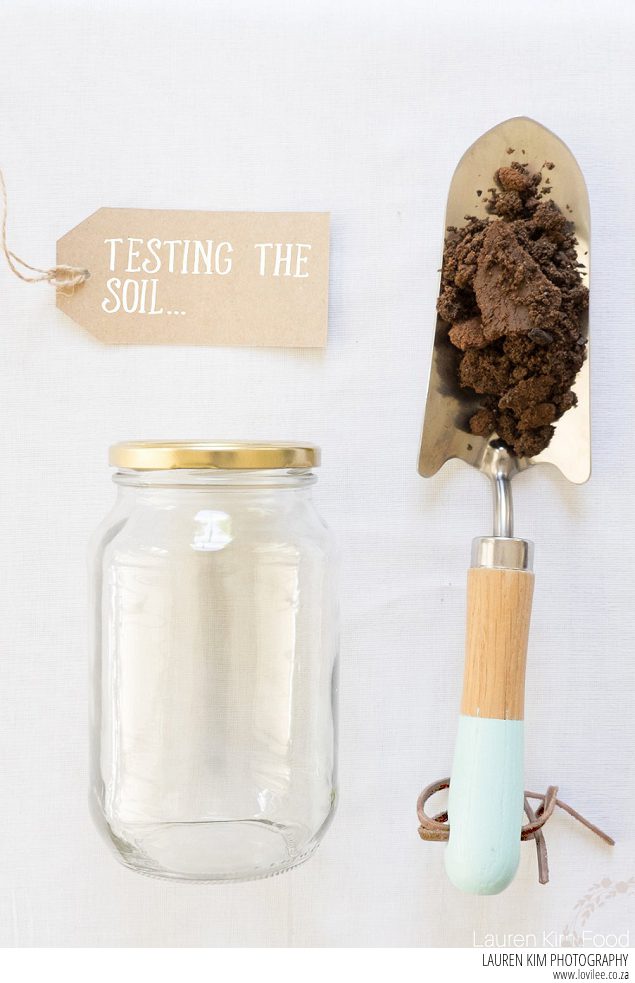
- First dig a hole where you want to plant your vegetables – it needs to be between 1 and 2 feet deep (this is quite deep, however you need to ensure that it is deep enough – do NOT take the top layer of soil, take the soil at the bottom of your hole)
- Secondly fill a glass bottle with enough soil to fill it up to half way.
- Thirdly top up the jar with water and securely place the lid on the bottle and SHAKE (rattle and roll)
- Shake until all the large particles have broken down.
- Let the bottle sit in on the windowsill for 24 hours. (Don’t check before hand – it really needs a long time to ensure that the layers separate properly – I checked with my Geotechnical Engineer who confirmed it when I wanted to be impatient and analyse it after 2 hours)
- After 24 Hours – Take a permanent marker and draw three lines. First line to mark the sand layer (the bottom layer) Second line to mark the silt layer and the Third line to mark the start of the clay layer.
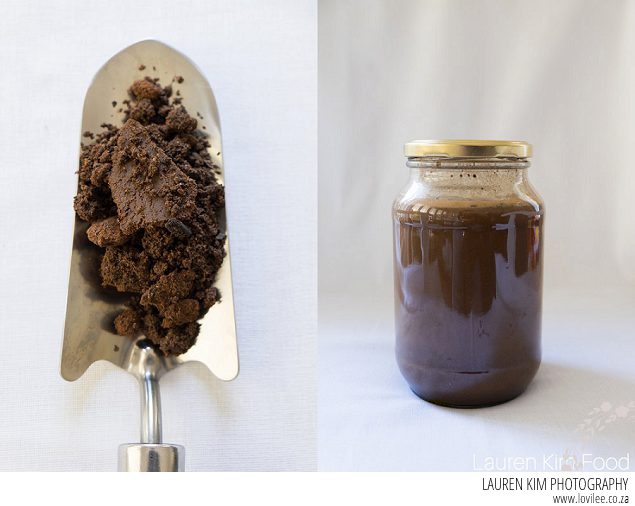
This is what my soil looks like – I would quantify it as Sandy Loam (it looks a lot better than I thought). When I water my garden the water drains quickly off the surface, however it still allows for great growth.
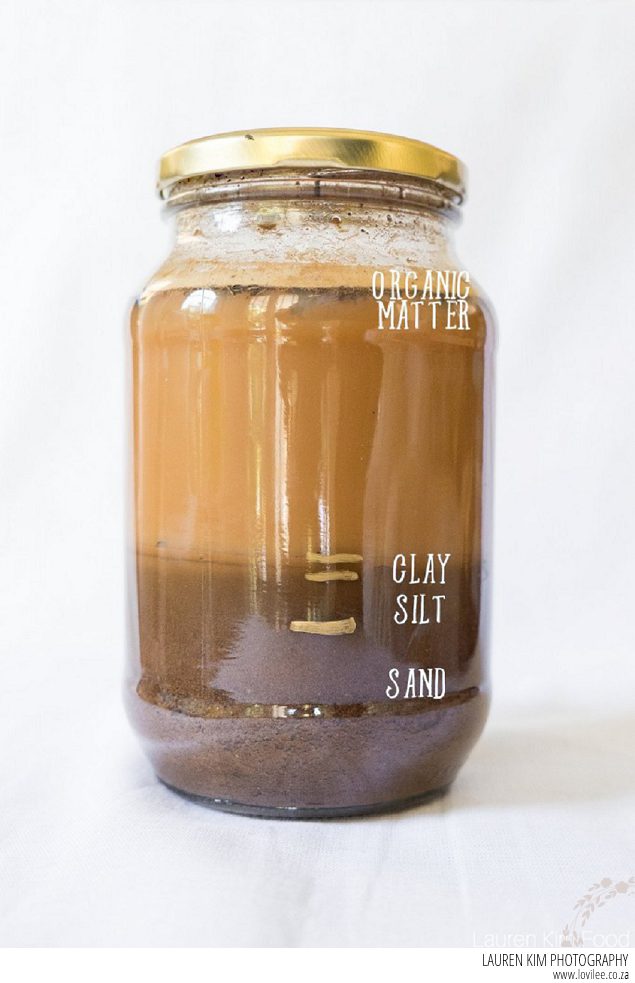
*With sandy soil if you try add compost to the soil it will wash away fairly quickly (along with its nutrients) when you water the garden. If you can find some clay you can mix a small amount in.
*With clay soil add some river sand (available from the nurseries) and some compost – you may struggle however to dig this in and incorporate it due to the nature of clay. You may want to do this over time – bit by bit.
Add the compost on top and let it build up over time allowing the nutrients and silt to slowly blend in with the soil.
- Plan your garden – You now know your plant wish list and the available space in your garden. Take a bit of time to figure out where you will be planting what plant. When planning this out remember to match your plants with their favourite companions. See table here for some companion planting.
- Seedlings versus. Seeds – This is just something to think about before heading to the nursery. Seedlings are small plants that have been grown from seed. They are generally sold as 6 little seedlings per pack of the same plant. The advantages of buying seedlings include … your garden has a head start as they are already little plants. This helps if you are impatient and would like to have herbs as soon as possible. The
disadvantage of seedlings is that not all plants like being transplanted from their little home in the seedling tray to a bigger pot – plants that prefer to be grown from seed include coriander and rocket.As with all plants, they start with a little seed. The seedlings discussed above were also grown from seed by someone so I promise it is possible to grow everything from seed. The advantage of growing your garden from seeds is the fact that it is a lot cheaper. Seed packets range from R15 – R40 and include between 20-50 seeds depending on the variety of plant (sometimes even more). Growing seeds also allows you to control the quantity of plants you are planting, for example, you may only want 2 spinach plants apposed to 6 if you bought them in seedling form.
Growing plants from seeds also allows you to control a number of chemicals and pesticides throughout the whole
process making your produce completely organic (if that is something you would like). Another great advantage of Growing your garden from seeds is the diversity of plants you ca grow. When buying seedlings you are limited to the general items such as Swiss chard, beetroot, origanum, basil, and thyme etc. If however, you chose to grow your herbs from seeds you have a huge variety to choose from including purple basil, lemon thyme, bright light spinach and more.There is no limit to how many varieties of plants you can grow – even if you travel you can bring back seeds to grow in your own garden. The disadvantages of growing your garden from seeds are that it takes a lot of patience and time. One cannot rush Mother Nature and her timing – if you are in rush this is definitely not the way to go however if you have time to watch your garden come to life growing plants from seeds is a great way to do it.

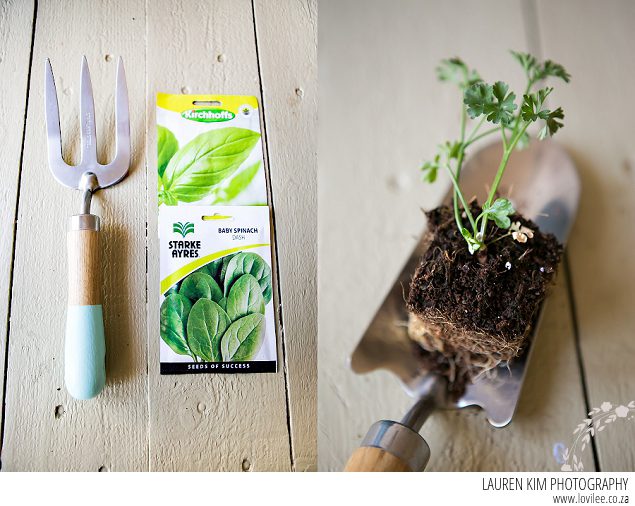
You are now ready to head off to the nursery to get your plants.
Let's get social
Instagram: @lovilee_zaTwitter: @lovilee_za
Facebook: @lovileeblog
or subscribe to never miss out on any new articles in this link.

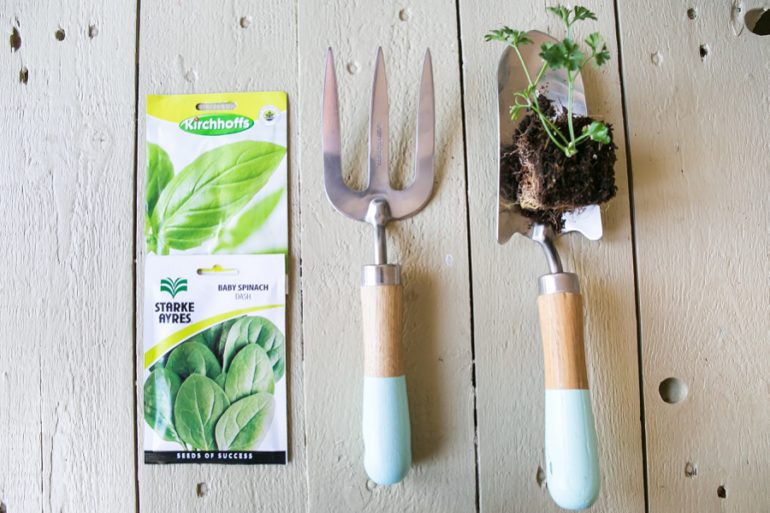


1 Comment
Love this – Always wanted my own herb garden. 😉
http://dirtypinkcity.com/